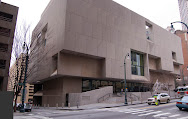Named by Time Magazine as one of the "form givers of the 20th Century", Marcel Breuer--born in 1902 in Pecs, Hungary--is remembered as one of the most influential architects and designers the world has ever known.
From the outset, Breuer had a clear understanding of the "form follows function" principle. To this, he embraced the concept of unit construction, and in 1925, with his innovative use of raw materials, Breuer was credited with being the first to use tubular steel in furniture; a now ubiquitous, modernist technique applied around the world. As well, Breuer was also one of the pioneers of minimalism.
In Europe, from 1928 to 1937, Breuer enjoyed a flourishing architectural practice. However, because of the outbreak of The Second World War, he made a decision to relocate in America. It was during this time when Harvard University offered him an Associate Professorship at it's School of Design. Simultaneously, many of his other colleagues were migrating to the U.S. including Bauhaus founder Walter Gropius, Le Corbusier and Bauhaus (faculty) colleagues Ludwig Mies Van Der Rohe. At Harvard Breuer was joined by Gropius, who taught at the school as well. Breuer continued to teach at Harvard University until 1946. And in 1970 he received the only Honorary Doctorate in Architecture ever awarded by that school.
Throughout his illustrious career, Marcel Breuer was commissioned for numerous, monumental civic structures, with some of the more notable being The UNESCO World Headquarters (Paris), The Whitney Museum of American Art (NYC), The University of Massachusetts Campus Center in Amherst, the headquarters of The Departments of HUD and HEW in Washington D.C., St. John's Abbey (Minnesota) and The Atlanta-Fulton Central Branch Public Library (Atlanta). In addition to his civic commissions, Breuer also received many residential commissions, including The Wolfson House, Breuer House and The Frank House, which he created in collaboration with Walter Gropius.
A major Exhibition of Breuer's work was shown at New York's Metropolitan Museum of Art in November 1972, and at Paris' Louvre Museum in the summer of 1974. More recently, in 2002 The Smithsonian Institution created an exhibition entitled Marcel Breuer: A Centennial Celebration
Marcel Breuer 1902-1981
***
Sources:
AFPL Central Public Library - Special Collections
Archives @ The Smithsonian Institution
***
.jpg)






+%28wordpress+crop%29.jpg)